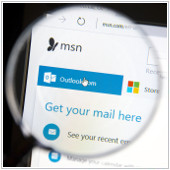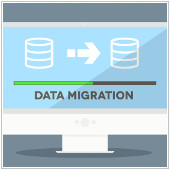Have you ever wondered how sales teams spend their time each week? According to Salesforce, on any given weekday an average sales representative spends more than 70 percent of their time managing emails. Since they are spending more than half of their working lives in their inbox, wouldn’t it be ideal if their customer relationship […]
 Have you ever wondered how sales teams spend their time each week? According to Salesforce, on any given weekday an average sales representative spends more than 70 percent of their time managing emails. Since they are spending more than half of their working lives in their inbox, wouldn’t it be ideal if their customer relationship management software can be integrated into it? A newly released add-on called Lightning for Outlook may just be the answer.
Have you ever wondered how sales teams spend their time each week? According to Salesforce, on any given weekday an average sales representative spends more than 70 percent of their time managing emails. Since they are spending more than half of their working lives in their inbox, wouldn’t it be ideal if their customer relationship management software can be integrated into it? A newly released add-on called Lightning for Outlook may just be the answer.
Salesforce and Microsoft have been working together for more than two years, and it has definitely been a win-win situation for everyone. In the latest development between these two tech giants, they've released a brand new product that promises to make the lives of sales representatives much easier. Lightning for Outlook, a flashy new add-on allows your sales team to access customer relationship management (CRM) software right from their Microsoft Outlook inbox without switching back and forth between the two applications.
The add-on accomplishes new levels of integration with Lightning Components, which allows for dragging and dropping of fields and elements from Salesforce directly into Outlook. For example, sales reps will be able to update a price quote with Salesforce’s SteelBrick -- a Quote-to-Cash software -- from within Outlook. This has been termed 'snapping'. Just 'snap' the code you want to migrate into the appropriate Outlook account.
One of the most exciting new features, called Lightning Sync, enables users to automatically sync contacts and calendars across Salesforce and Outlook. "When you update a contact in Outlook, it's reflected in Salesforce and on your mobile device," said Greg Gsell, Salesforce's director of Sales Cloud. "All devices and teams are immediately kept up to date."
Both Lightning for Outlook and Lightning Sync are available now; the former is free for all Salesforce Cloud users, and the latter is free for users of Salesforce Cloud Lightning Enterprise Edition or higher. Lightning Components Framework -- a UI framework for developing dynamic web apps, which gets integrated into Outlook, will be released later this year with pricing to be announced at a later date.
However, this doesn’t mean Lightning for Outlook will solve everything. This plugin simply makes it easier for the two programs to work together. Still, there is a maze of security, database and account management issues to navigate through to make this new feature work properly. At Complete Technology Resources, Inc., our experts are well-versed in email and CRM systems, so why not give us a call today and work smarter, not harder.

 Virtualization is as complicated as it is beneficial to SMBs. The concept alone can take time to fully grasp and making it a reality at your company is even more difficult. However, Amazon Web Services needs to make the service as easy as possible if they expect to retain customers and increase their bottom line. In an effort to make database migrations straightforward and economical, they’ve released a new tool to take care of all the headaches associated with moving your network to a virtualized environment.
Virtualization is as complicated as it is beneficial to SMBs. The concept alone can take time to fully grasp and making it a reality at your company is even more difficult. However, Amazon Web Services needs to make the service as easy as possible if they expect to retain customers and increase their bottom line. In an effort to make database migrations straightforward and economical, they’ve released a new tool to take care of all the headaches associated with moving your network to a virtualized environment. If an IT consultant told you that backing up data is one of the most important things for your technical team to do well, you’d probably nod in agreement. But what if they suggested that your dirty data requires cleaning prior to utilization? One simple adjective like “dirty” may give you pause, and there’s a handful of other terms about “data” that you may not recognize either.
If an IT consultant told you that backing up data is one of the most important things for your technical team to do well, you’d probably nod in agreement. But what if they suggested that your dirty data requires cleaning prior to utilization? One simple adjective like “dirty” may give you pause, and there’s a handful of other terms about “data” that you may not recognize either. Communication is the heart of your small to medium-sized business; you write emails to customers, share documents and discuss projects with your teams over instant messaging apps, all when you’re on the move. But what if you’re trapped in an airport for hours and your colleagues need a document printed right there and then? Don’t panic. With any Android device you can remotely print the document in no time. Here are four ways to do so.
Communication is the heart of your small to medium-sized business; you write emails to customers, share documents and discuss projects with your teams over instant messaging apps, all when you’re on the move. But what if you’re trapped in an airport for hours and your colleagues need a document printed right there and then? Don’t panic. With any Android device you can remotely print the document in no time. Here are four ways to do so.